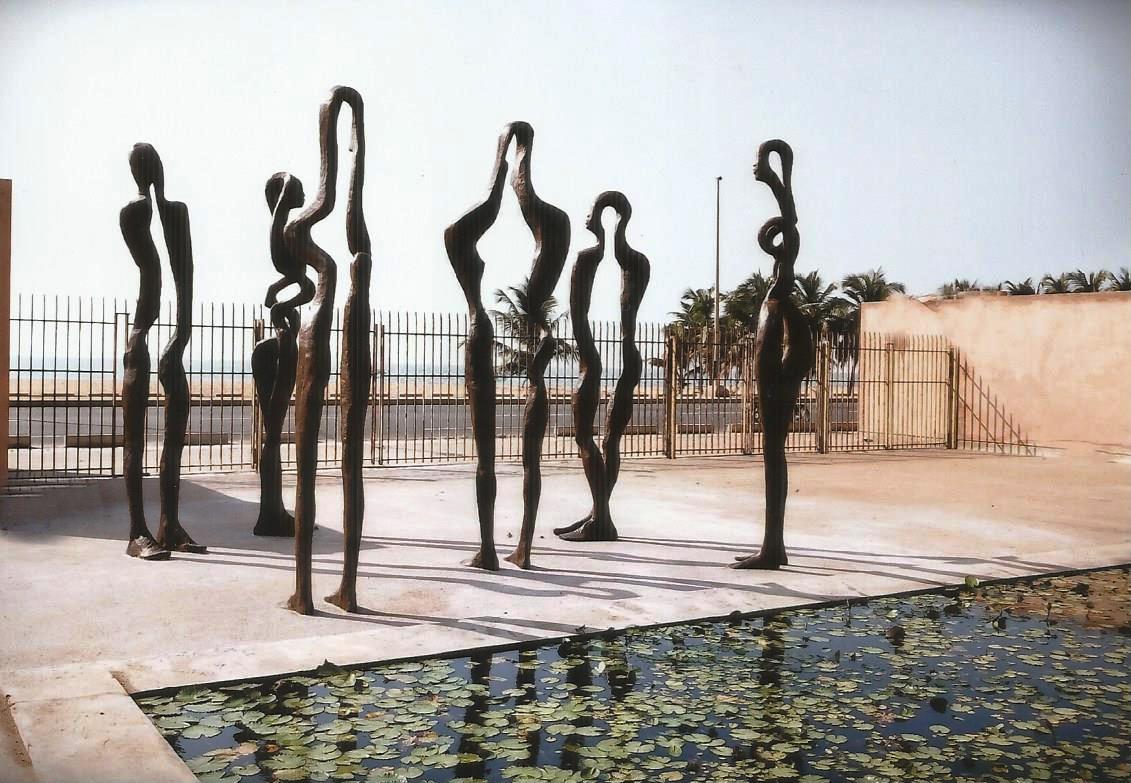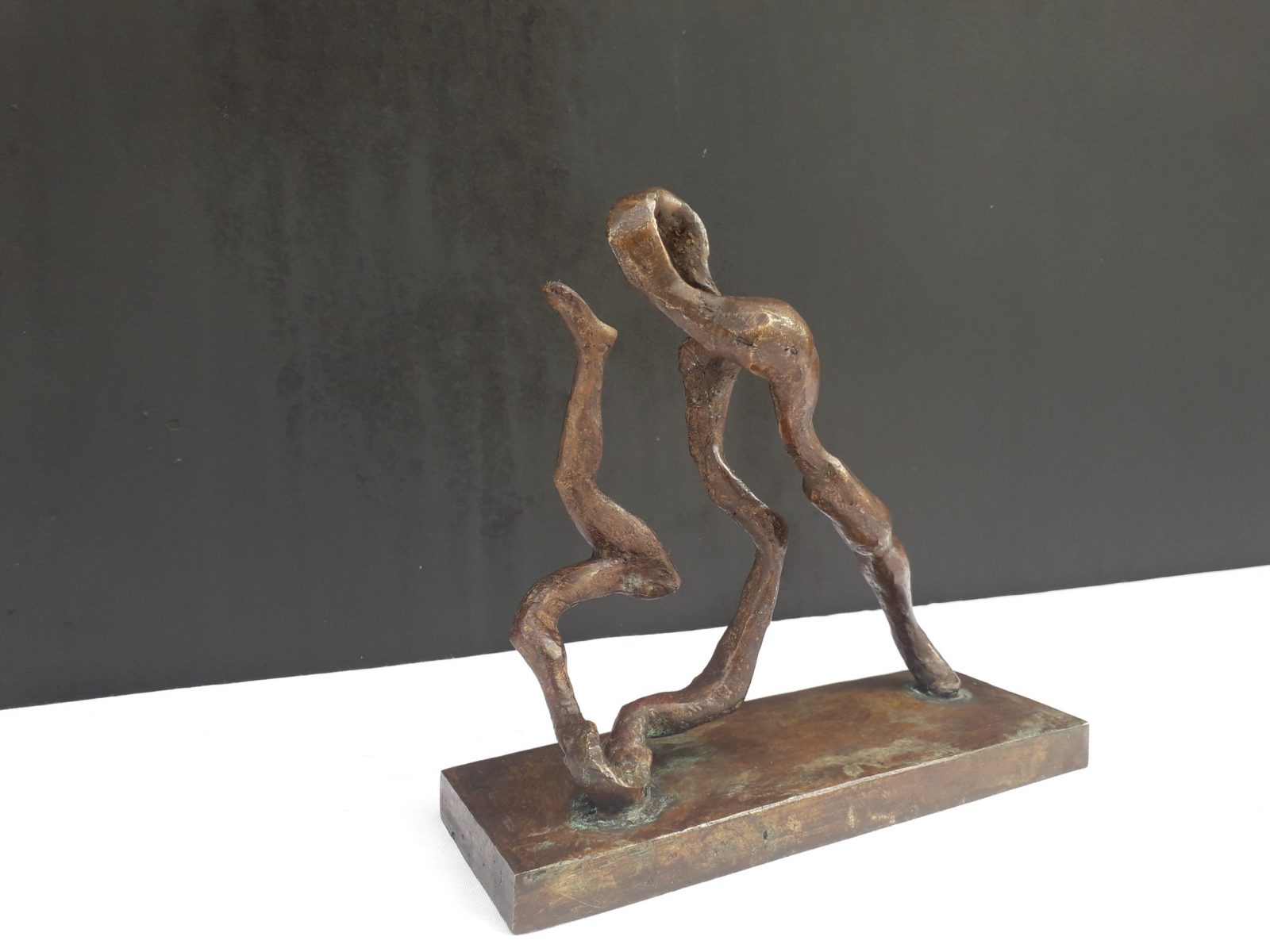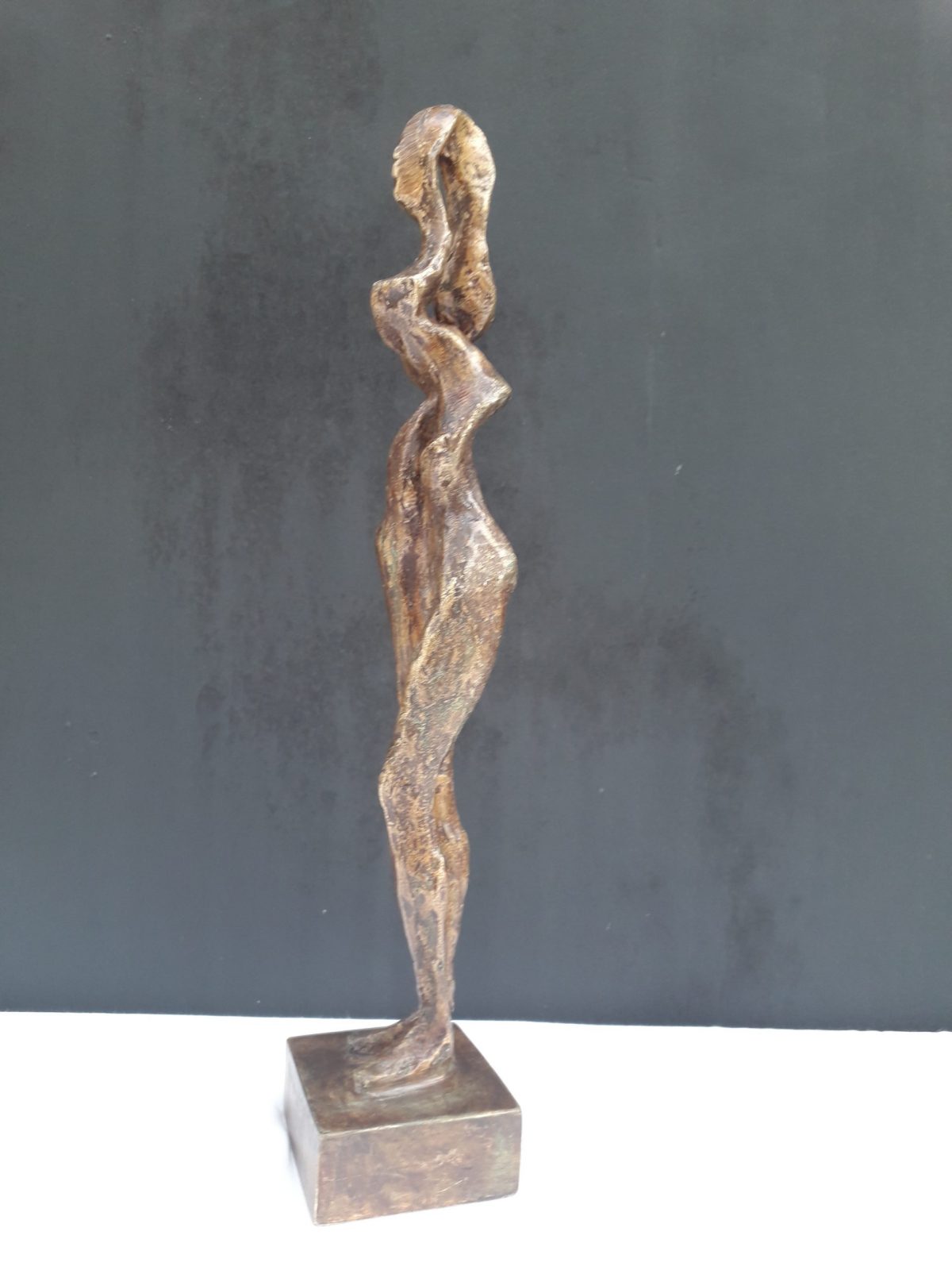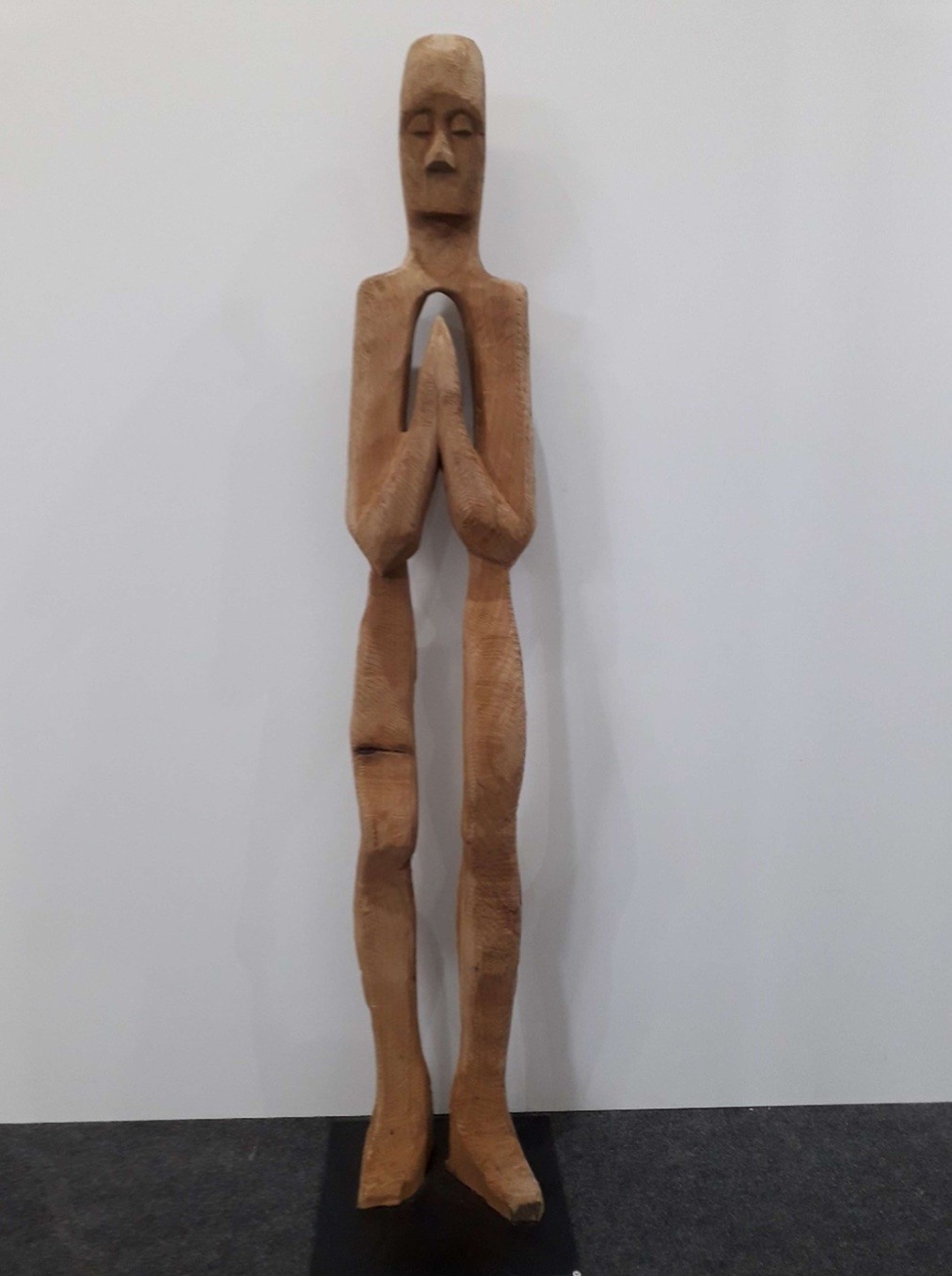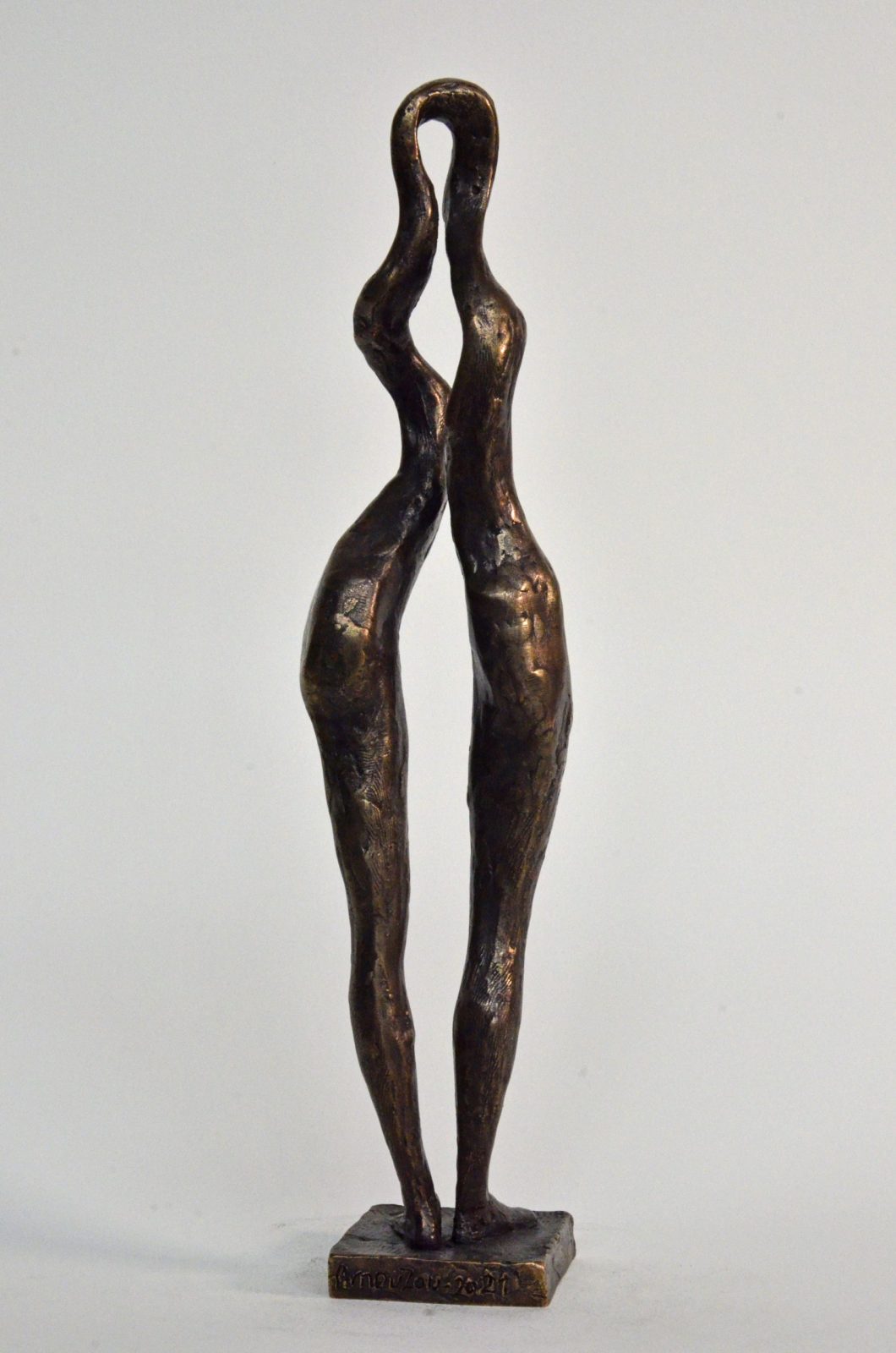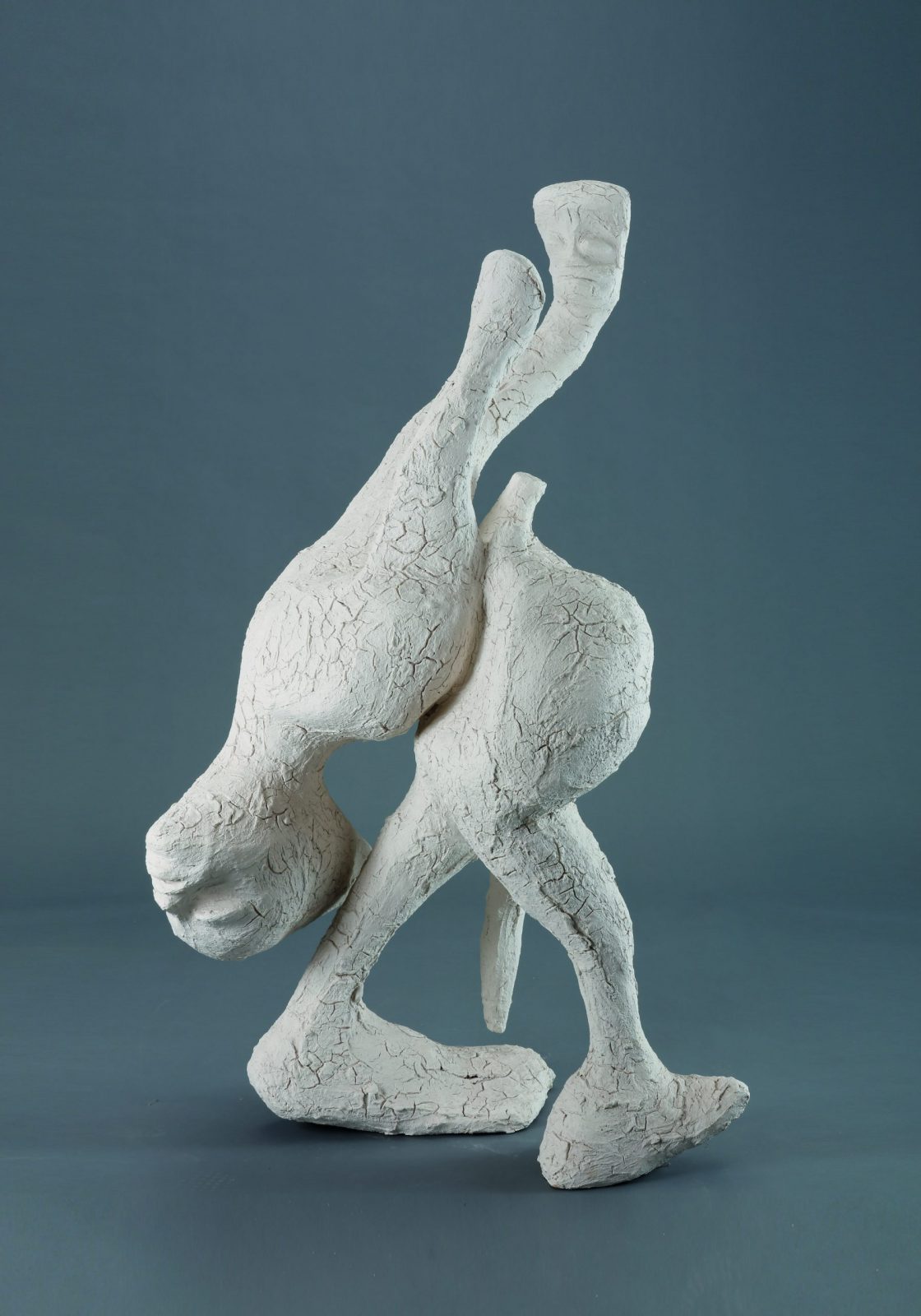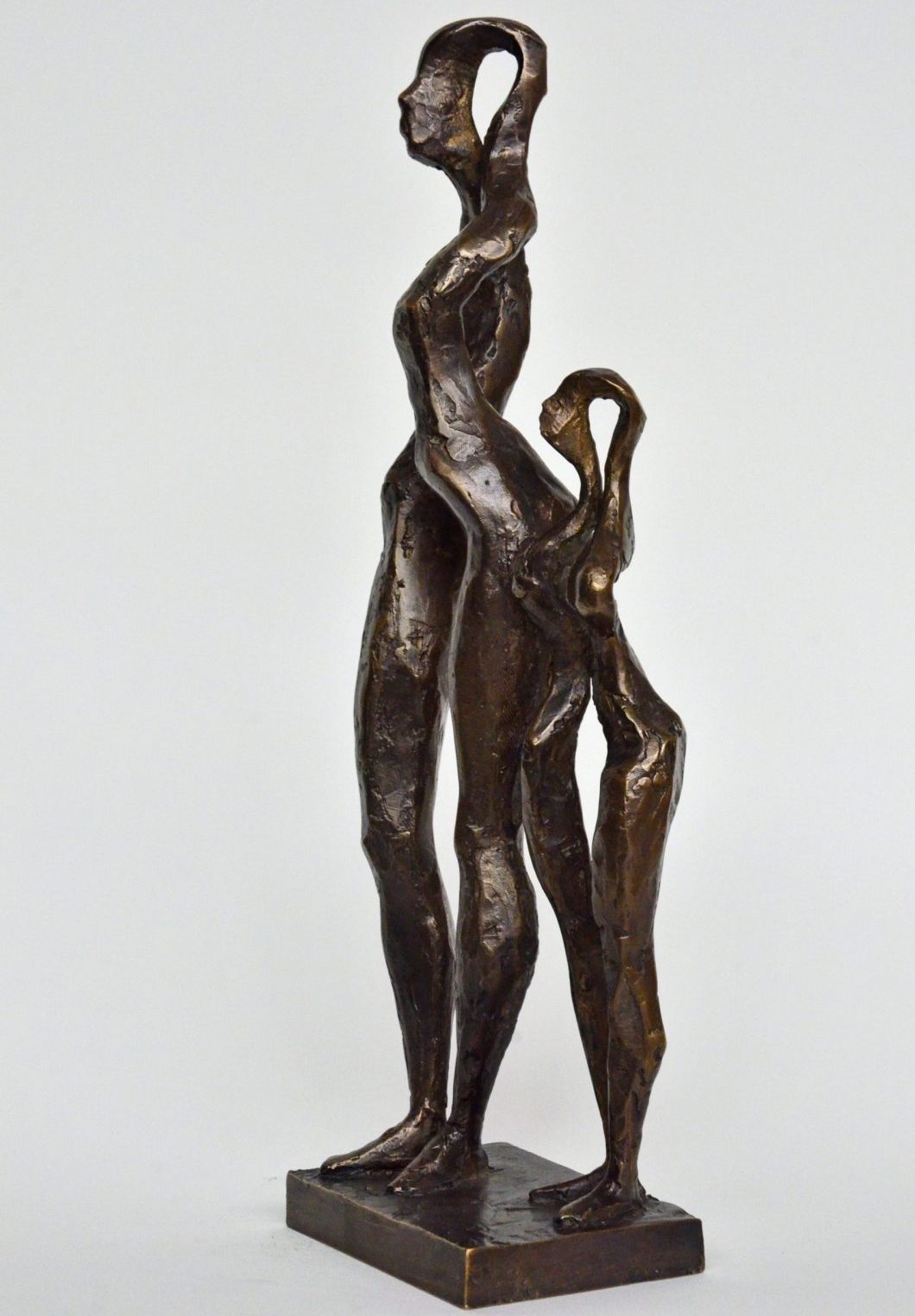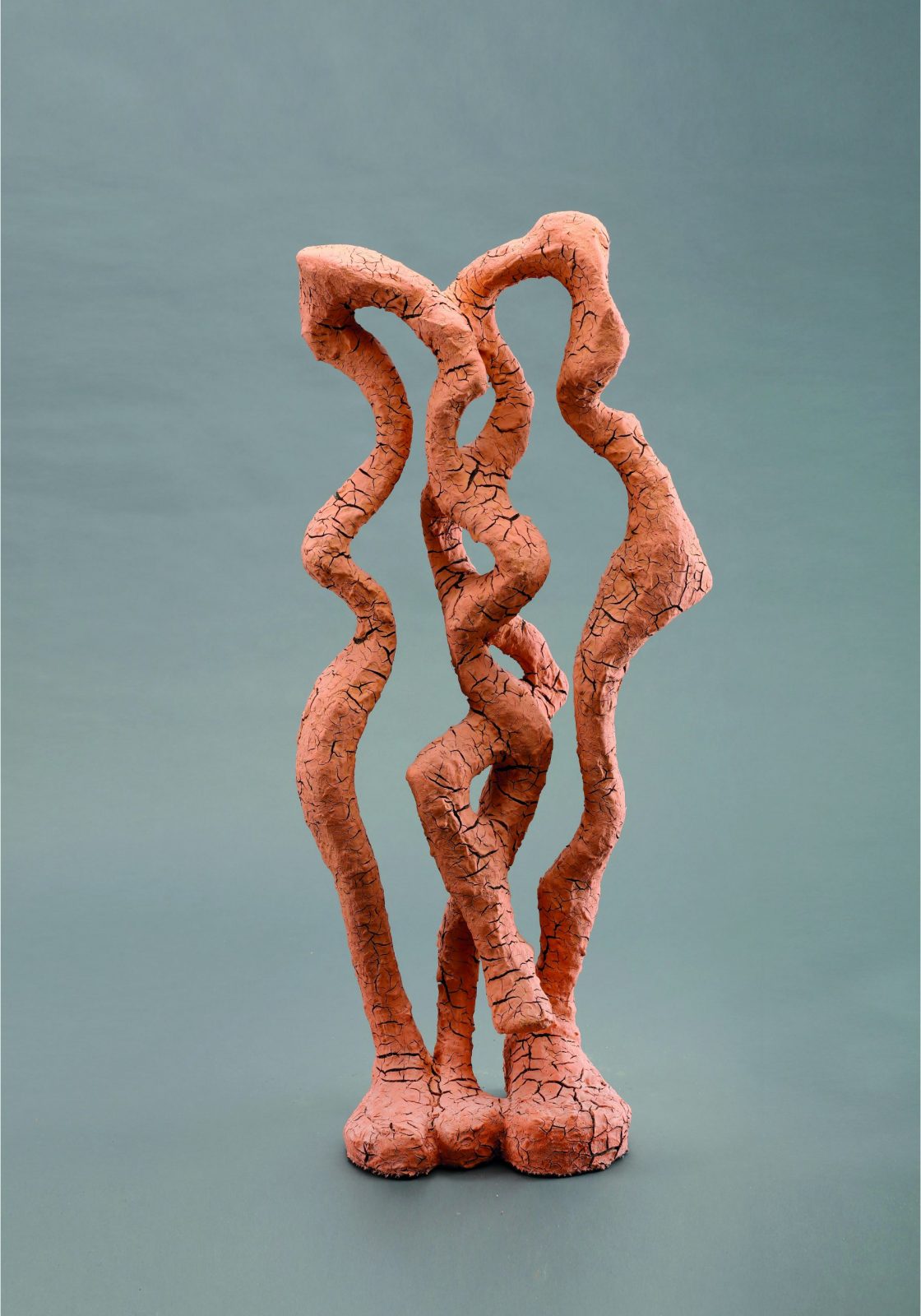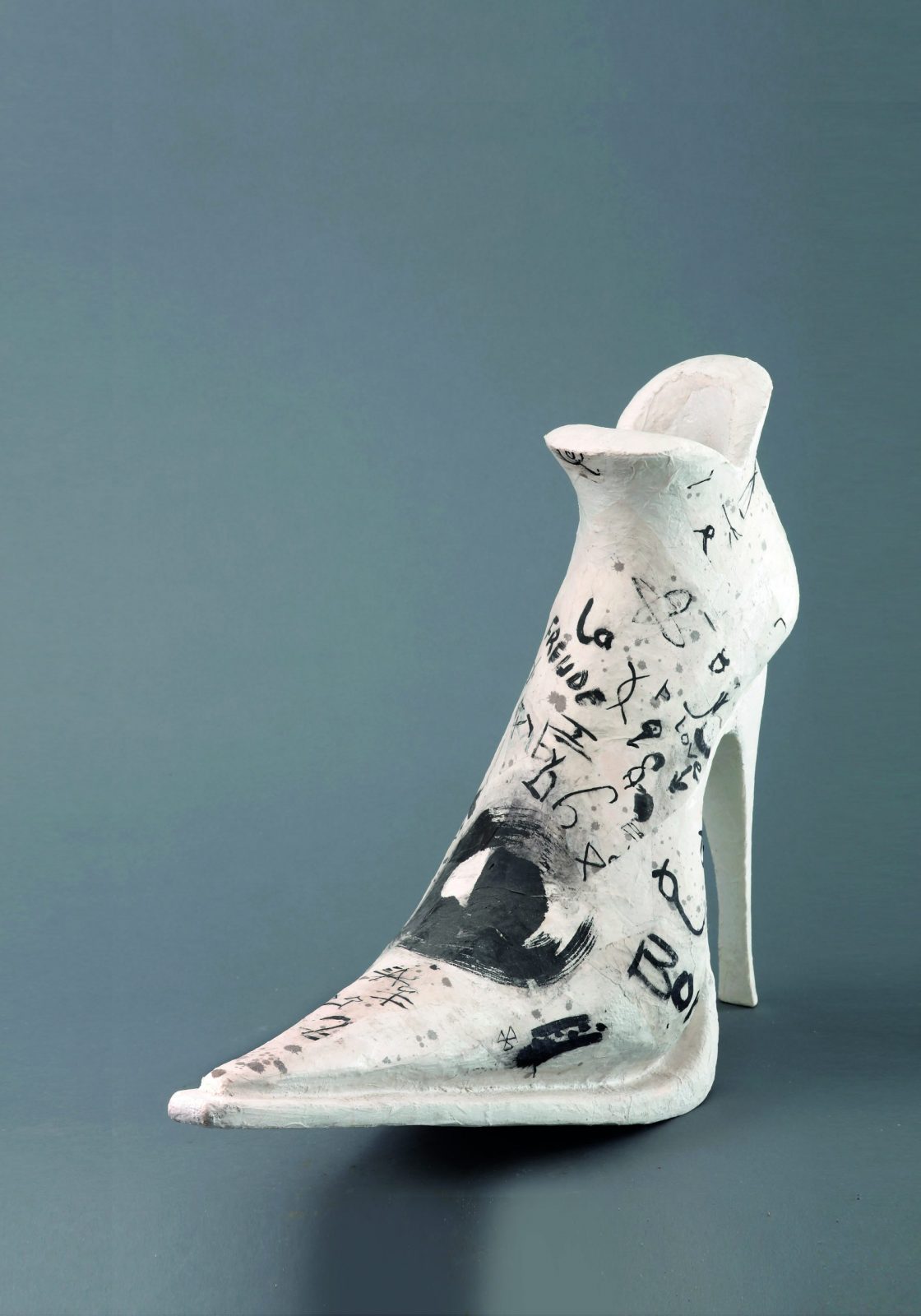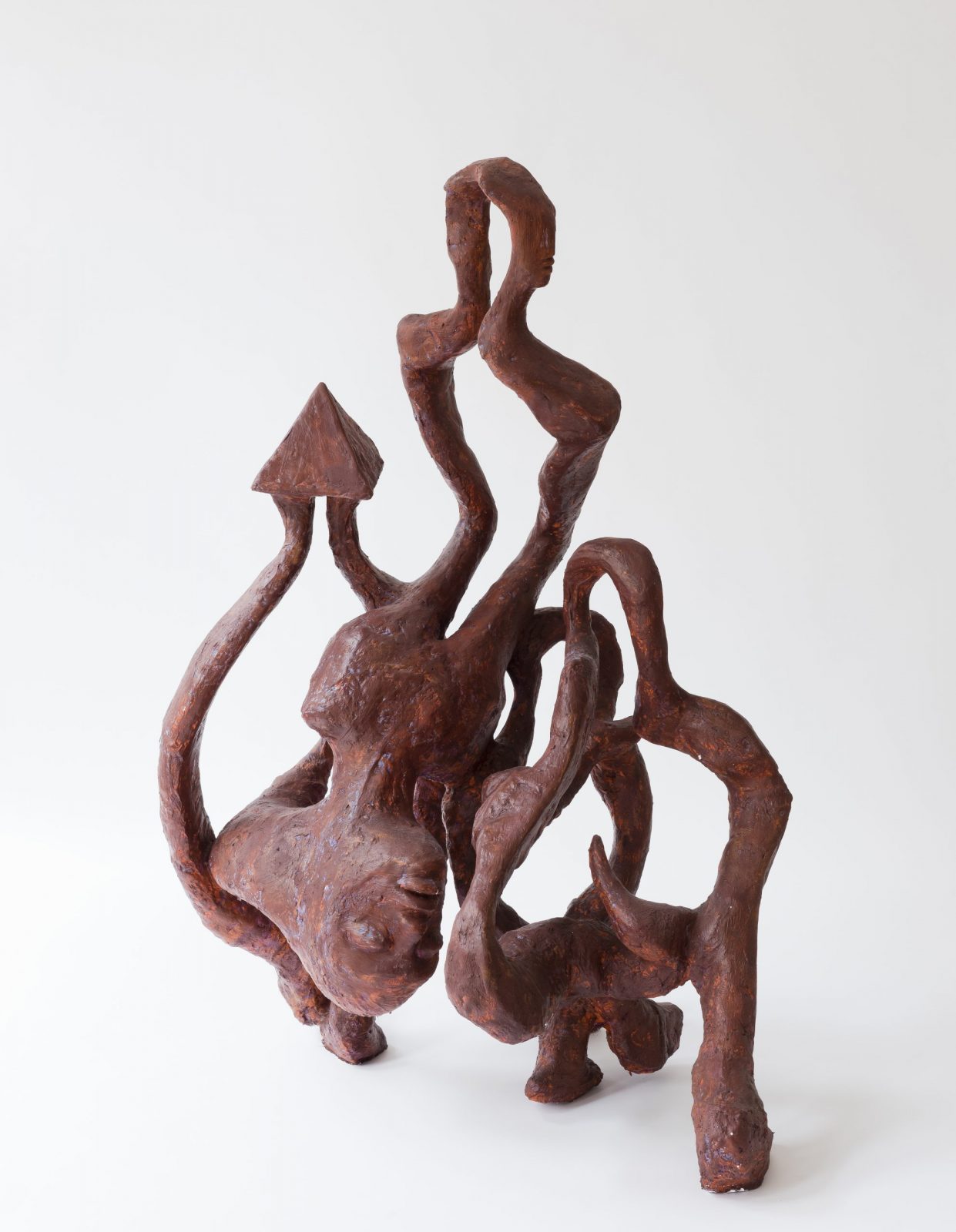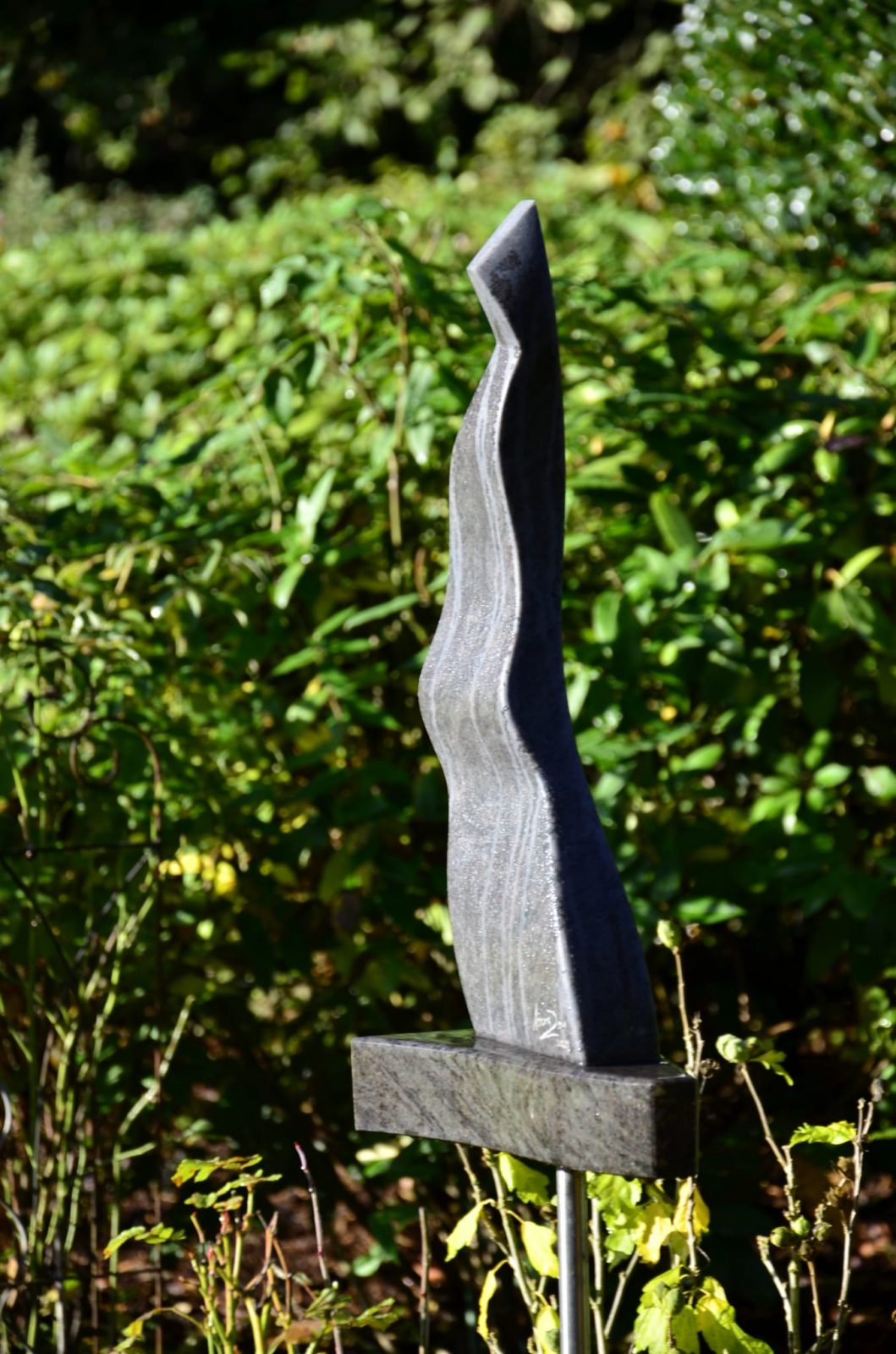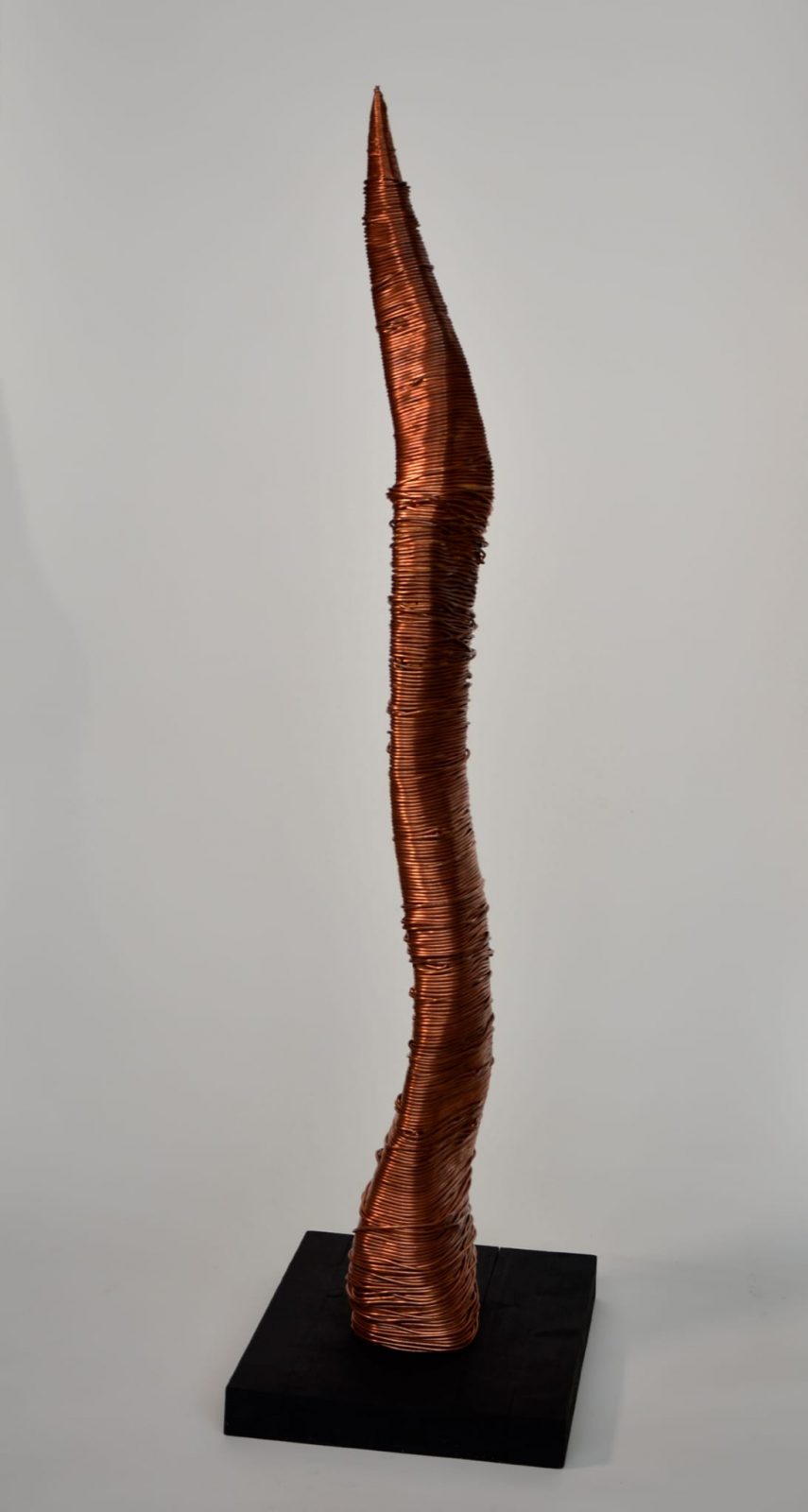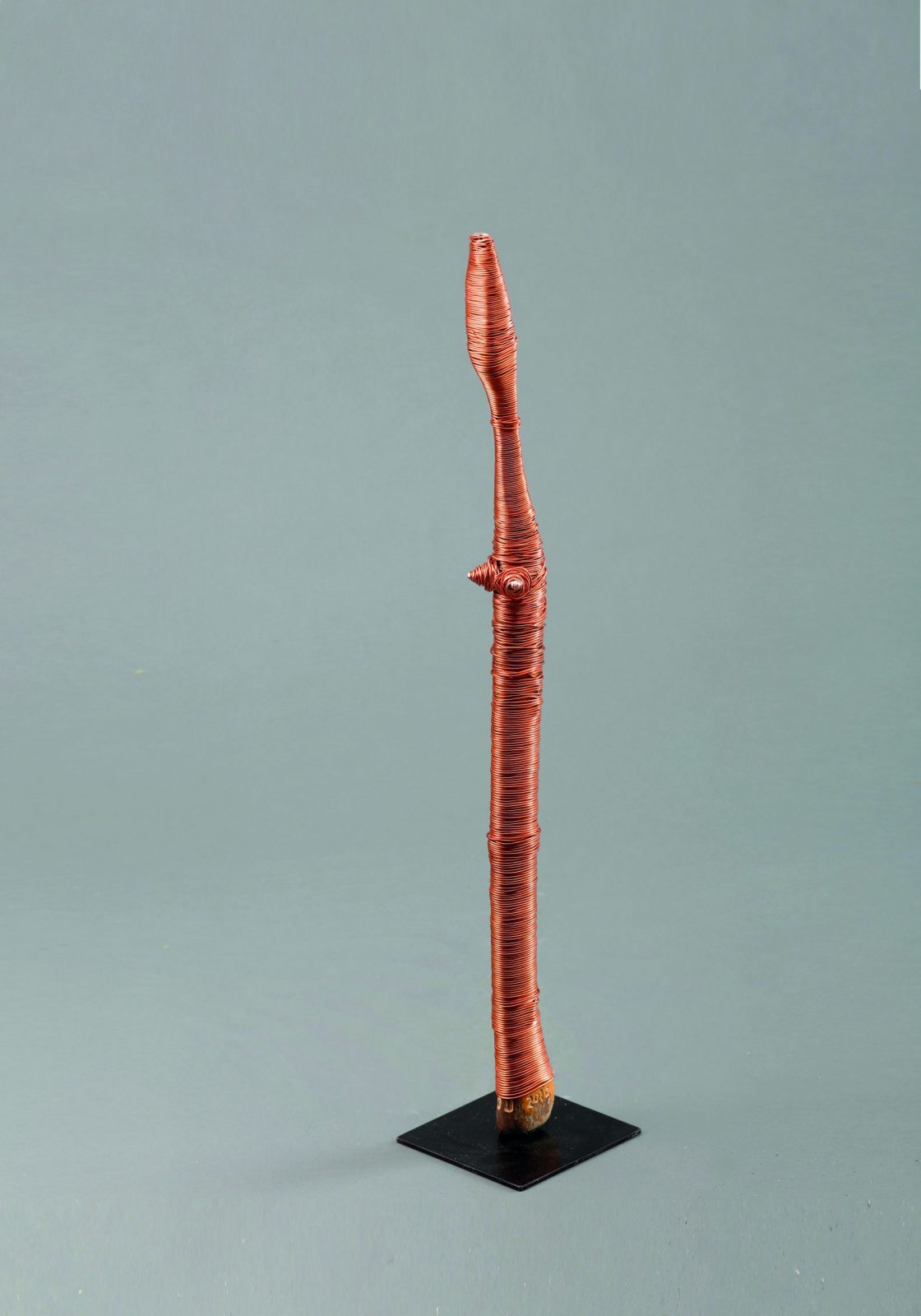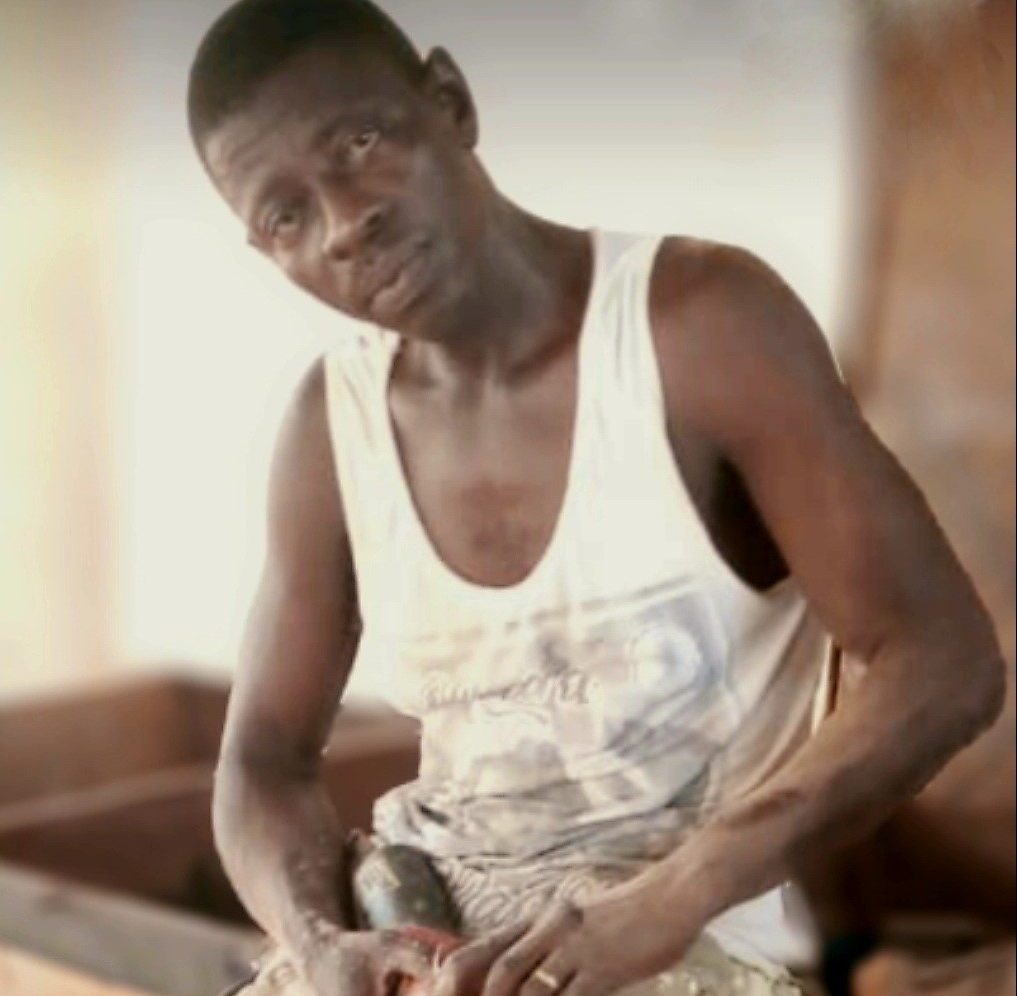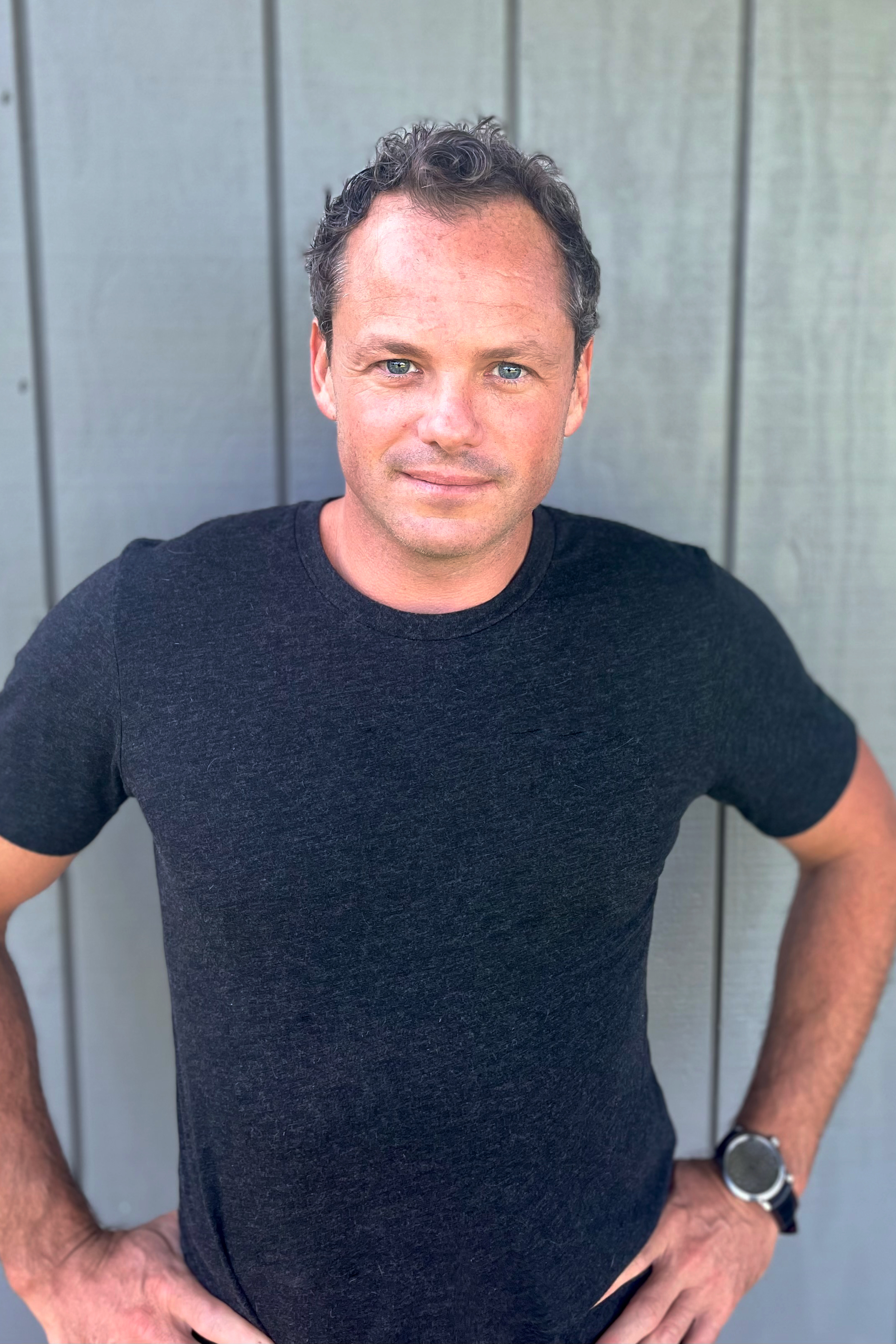Amouzou Amouzou-Glikpa
Amouzou Glikpa was born in 1960 in Sokode, Togo and is a well-established sculptor working in bronze, wood and electric wire. He began his professional career in Lomé, where he studied German Language and Literature. In 1984, he moved to China where he spent a decade studying sculpture at Beijing’s Central Academy of Fine Arts as Professor Sheng Yang’s master pupil. Glikpa furthered his studies in sculpture at the Düsseldorf Art Academy from 1995 to 1996. He went on to become assistant to Professor Anthony Cragg from 1998 to 2004. He currently lives and works in Wuppertal.
With much of his life spent abroad, Glikpa recognises that Modern European Art and Contemporary Western Art have shaped his working process. Nevertheless, the artist says “I always go back to traditional African sculpture for inspiration.” Glikpa has been heavily influenced by both the religion and the traditional art of Togo; its myths and legends are recurring themes incorporated into the artist’s work.
The artist describes his source of inspiration emerging “from the life of human societies and their cultures, because for me, art is the mirror of society.” Glikpa merges his artistic heritage with his fascination for Chinese and European history, evident through the artist’s portrayals and use of materials. The artist fuses multicultural references, while applying earth, charcoal and pigments from Africa and Europe to create his sculptures. The most important aspect of Glipka’s artistic approach and his incessant objective lies in innovation and experimentation with styles that have not yet been seen.
Glikpa has widely partaken in exhibitions across China, Japan, France, Germany, Brazil, and his native Togo. He has exhibited at the Musuem Ehrenhof (Düsseldorf, 1993), Cultural Center Nagoya (Japan, 1994), Cultural Center Belo Horizonte (Brazil, 1996), Von der Heydt Museum (Wuppertal, 1997), Alexander III Paris Museés (2000), and more recently at Landtag NRW (Düsseldorf, 2021).

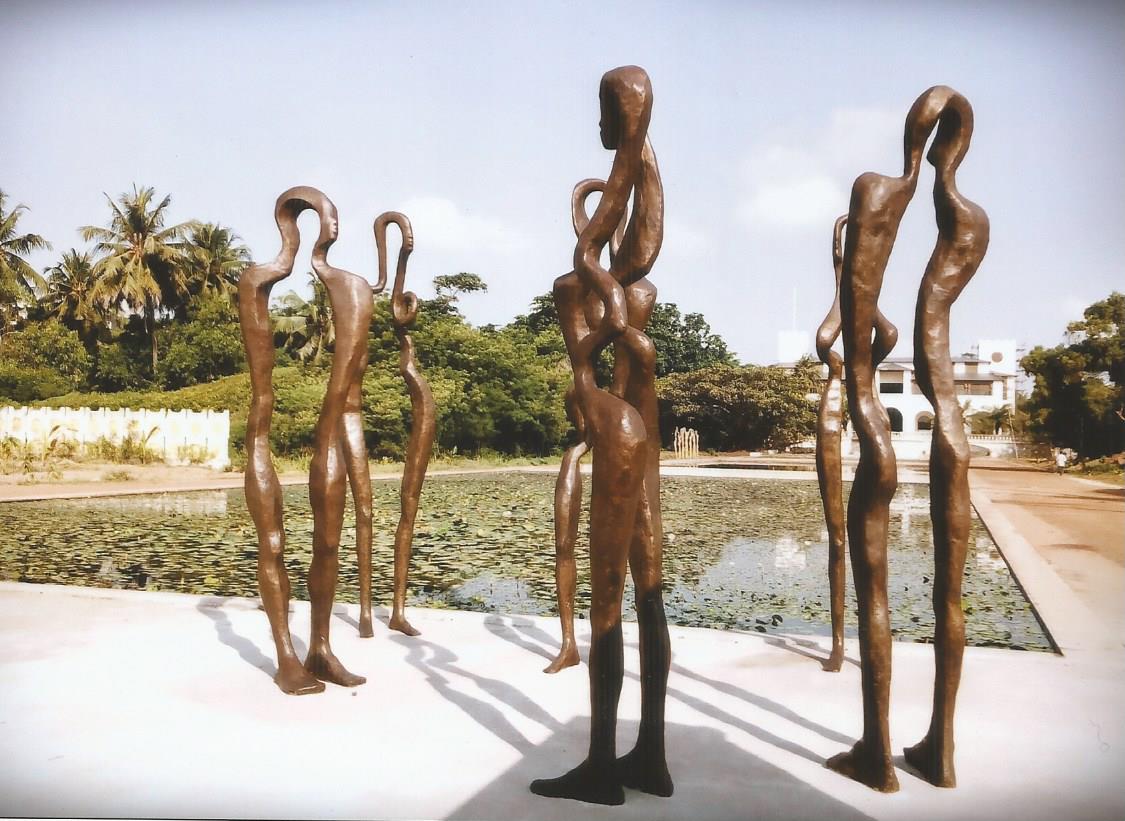
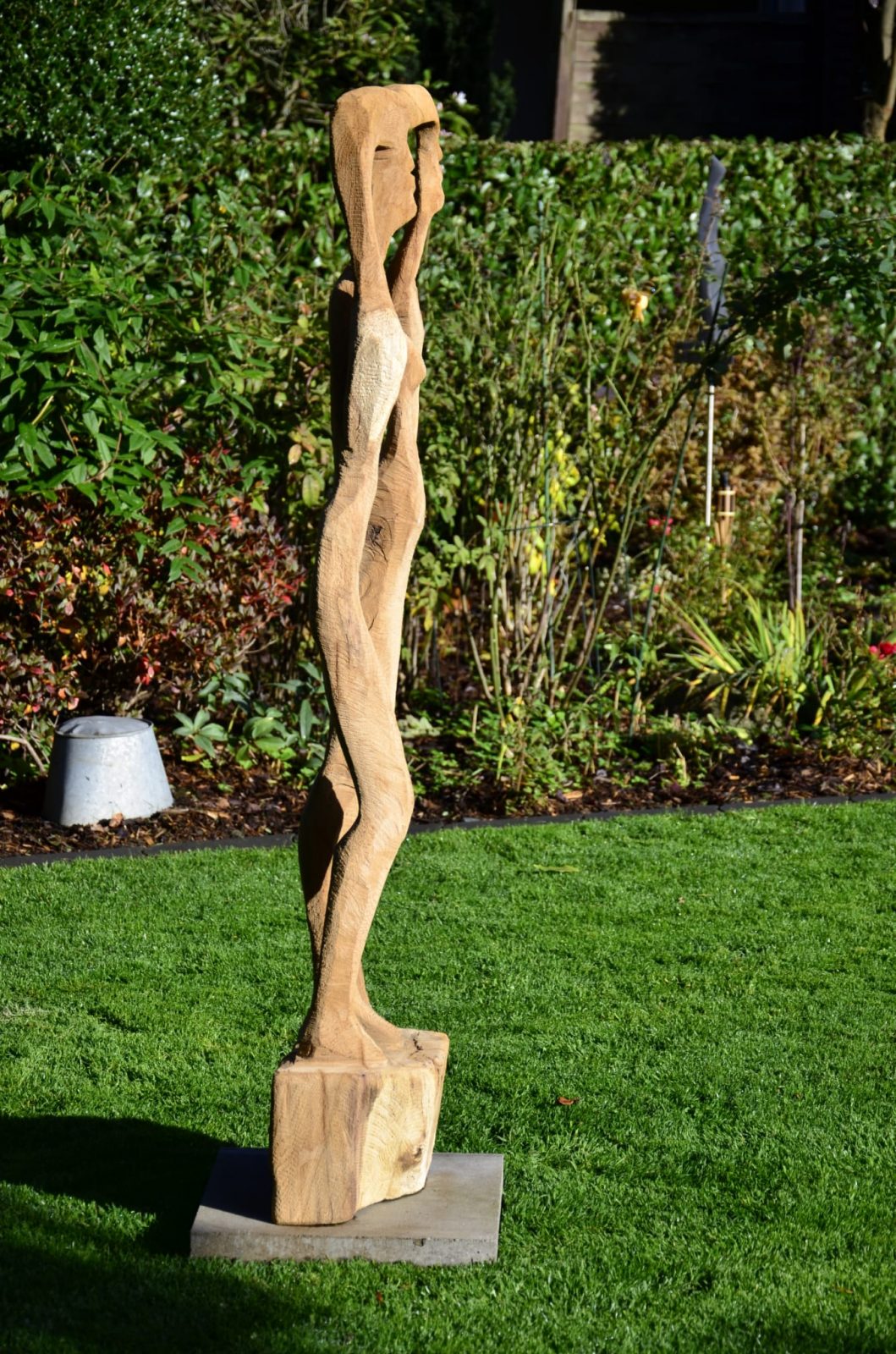
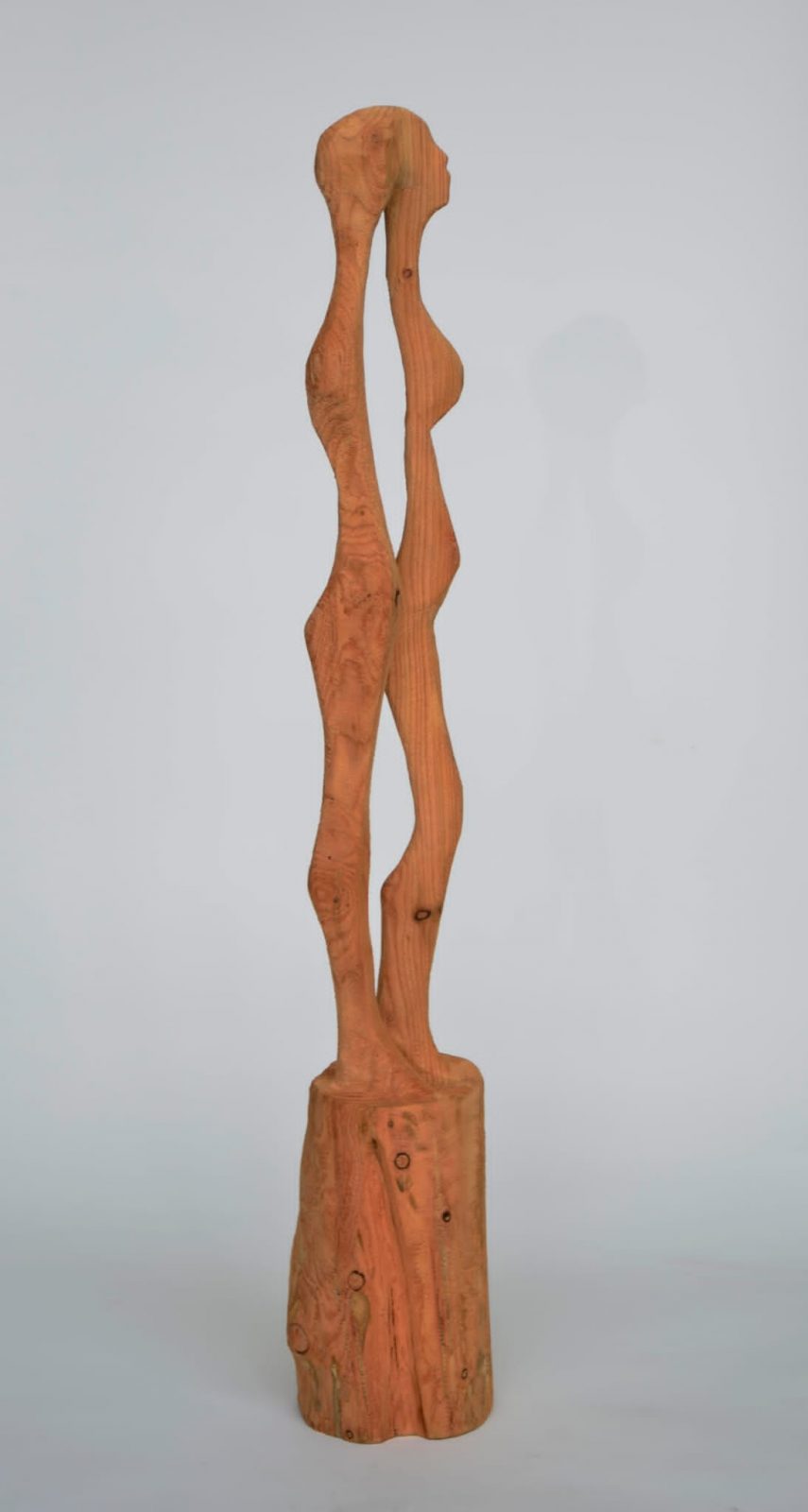

Amouzou Glikpa was born in 1960 in Sokode, Togo and is a well-established sculptor working in bronze, wood and electric wire. He began his professional career in Lomé, where he studied German Language and Literature. In 1984, he moved to China where he spent a decade studying sculpture at Beijing’s Central Academy of Fine Arts as Professor Sheng Yang’s master pupil. Glikpa furthered his studies in sculpture at the Düsseldorf Art Academy from 1995 to 1996. He went on to become assistant to Professor Anthony Cragg from 1998 to 2004. He currently lives and works in Wuppertal.
With much of his life spent abroad, Glikpa recognises that Modern European Art and Contemporary Western Art have shaped his working process. Nevertheless, the artist says “I always go back to traditional African sculpture for inspiration.” Glikpa has been heavily influenced by both the religion and the traditional art of Togo; its myths and legends are recurring themes incorporated into the artist’s work.
The artist describes his source of inspiration emerging “from the life of human societies and their cultures, because for me, art is the mirror of society.” Glikpa merges his artistic heritage with his fascination for Chinese and European history, evident through the artist’s portrayals and use of materials. The artist fuses multicultural references, while applying earth, charcoal and pigments from Africa and Europe to create his sculptures. The most important aspect of Glipka’s artistic approach and his incessant objective lies in innovation and experimentation with styles that have not yet been seen.
Glikpa has widely partaken in exhibitions across China, Japan, France, Germany, Brazil, and his native Togo. He has exhibited at the Musuem Ehrenhof (Düsseldorf, 1993), Cultural Center Nagoya (Japan, 1994), Cultural Center Belo Horizonte (Brazil, 1996), Von der Heydt Museum (Wuppertal, 1997), Alexander III Paris Museés (2000), and more recently at Landtag NRW (Düsseldorf, 2021).
